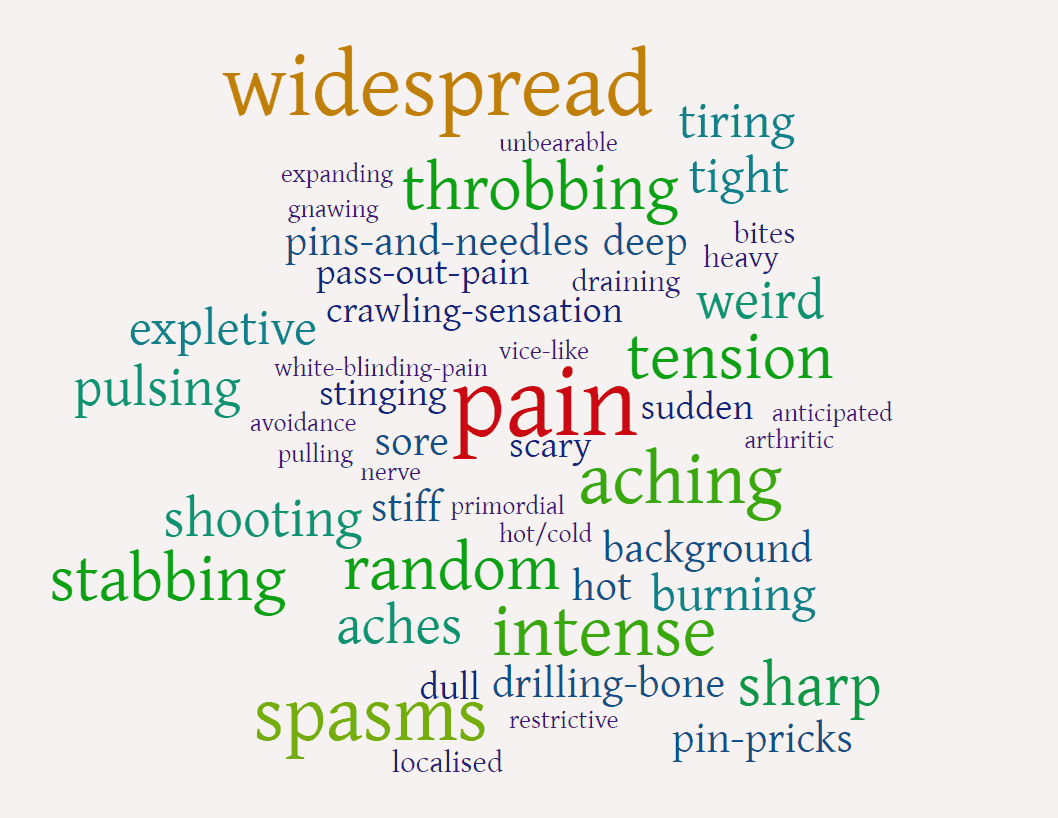Developing mindfulness will be a key component of changing your relationship to pain.

Relate compassionately to your pain

Recognize conditions that contribute to chronic pain
Relate
Developing mindfulness will be a key component of changing your relationship to pain.
Paying attention in a particular way: on purpose, in the present moment, and non-judgmentally.
This is Jon Kabat-Zinn definition of mindfulness. He created Mindfulness Based Stress Reduction and is widely recognized as the person who brought mindfulness to the West.

Eckart Tolle said, "The more shared past there is in a relationship, the more present you need to be; otherwise, you will be forced to relive the past again and again."
Mindfulness will allow you to experience your physical and emotional pain with less suffering and it will help you resist urges to use “right now” fixes for your pain that may negativity affect you and the pain over time. Mindfulness helps you find a balance, or equanimity, in your relationship to pain; neither suppressing nor identifying with the sensations.
A formal Mindful Meditation practice will strengthen your ability to be mindful more frequently. As you practice Mindful meditation, you learn to develop the focusing power of your mind, The focusing power of your mind is the single most important tool that you have in this life.
Mindful Meditation
Mindful Meditation (MiMed) is the formal: “Let’s set aside some special time to really develop this skill.” When you start sitting quietly with yourself, intentionally taking time to practice being mindful, you start to see the habits of your mind and how thoughts and emotions effect physical sensations and how physical sensations effect emotions and thoughts! Exploring this cool, crazy connection with curiosity and gentleness opens you up to so many options for healing. The root of the practice is the intention for you to sit with what is going on with you right now. MiMed is so simple and so deep! The root of the practice is the intention for you to sit with what is going on with you right now. The acronym R.A.I.N. can be a very helpful way for you to remember the intention.
Recognize
What are you noticing right now? Is it a thought, emotion, physical sensation?

Accept
A matter of factness that this is what is right now. When you stop using energy to resist what is, you now have more energy for life.

Investigate
Identify your experience: thought, emotion, or sensation? Describe it briefly. Gently investigate, but sometimes just being present without overanalyzing is enough.

Non-judgement
Try it
Find a place where you can sit comfortably for a few minutes. You may want to start with just 3-5 minutes of intentional practice if this is new to you. Sit in a posture that has some energy. The goal here is not to fall asleep but to explore your here and now. Focus on your breath as you inhale and exhale. Just noticing, not changing anything. If your attention wonders to a thought, emotion, or physical sensation just take note of this. Be curious about what you feel in your body, where you feel it in your body, notice as it changes. This is where you can incorporate R.A.I.N. Now return to you breath. Your breath is your anchor to this moment. Repeat this process. Every time you notice, take a gentle note, and return to your breath, this is success.More resources
For more in-depth work with pain and mindfulness, check out Shinzen Young. He is a wonderful meditation teacher who has helped people find relief from pain for over 40 years. Shinzen’s book “Natural Pain Relief” explains, in much more detail, how to use mindfulness to ease physical pain. You may want to also explore his website: Shinzen.org
